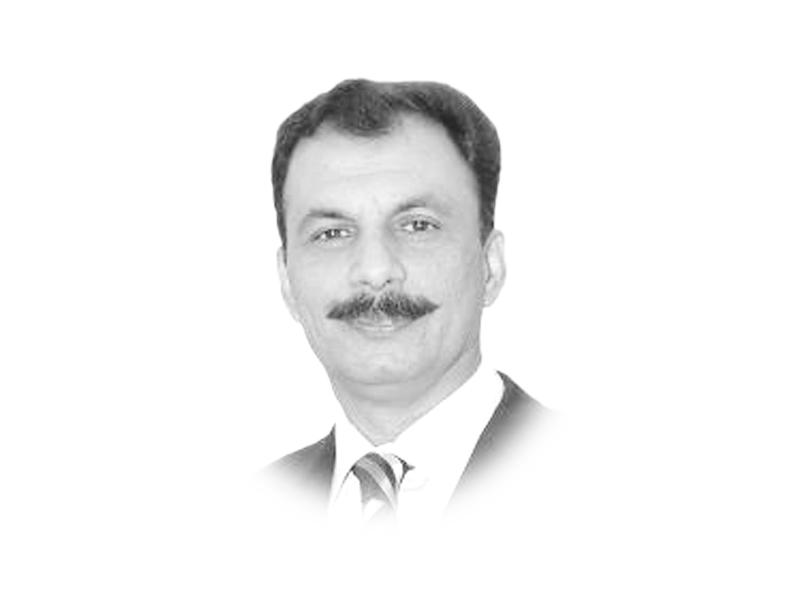
Over the last decade, public safety has been debated in the media, but the interpretation of this term has remained quite elastic. In Pakistan, public safety is rigidly interpreted in the context of public complaints. Therefore, the inclusion of transparency, accountability to autonomous bodies, fair procedures for postings and security of tenure are considered matters that pertain to public safety. Our outdated policing model is yet to contribute towards public safety. Policing without public safety can never earn real public appreciation and political ownership, hence policing in the country remains dependent on artificial respiration.
The notion of public safety was derived from the Japanese model. Japan has a National Public Safety Commission (NPSC) that consists of a chairman and five members appointed by the prime minister. Members of the NPSC are appointed with the consent of both houses of the Diet or the Japanese parliament. The NPSC operates independently of the cabinet and coordinates with it through a minister. The principal functions of the NPSC include guaranteeing neutrality of the police, keeping the police apolitical and upholding the ideals of democratic policing. It has the authority to appoint or sack senior police officers. Its current chief is from Japan’s Liberal Democratic Party and amongst its members are two professors, a journalist, a banker and a lawyer. Keeping in view the apolitical composition of the Japanese NPSC, we should try following a similar model.
Through an evolutionary process, the Japanese model evolved from a centralised apparatus to a public service body. In the past, the country’s policing model, particularly in the rural areas, was based on fear with the police enjoying huge discretions and hence compromising public safety. During the first half of the 20th century, autocratic policing facilitated autocratic rule. After the Second World War, the policing system in Japan was decentralised. To improve public safety, the police were placed under civilian control and a law pertaining to the police was introduced in 1947, which was later amended in 1951 and 1954. Hence, one can conclude that the policing system of any state truly reflects the style of governance.
The prime objective of the promulgation of PO 2002 was to formally institutionalise public safety in policing in Pakistan. The original police order used the terms “public” and “service” 266 and 37 times respectively. Historically, policing remained elite-centric; hence ensuring public service and safety is yet to become a mission of the police. While there has been much talk against what is known as thana culture, many of those who spoke out against it actually worked to strengthen this culture for their own motives.
Since 2008, Pakistan’s National Public Safety Commission (NPSC) has stopped holding its meetings. The dysfunctional and ineffective public safety commissions compromised public safety in the country. Since the police in Sindh and Balochistan operate under the colonial and outdated Police Act of 1861, a national-level public safety apparatus cannot become a reality.
The selection and appointment of the inspector general (IG) requires thorough scrutiny. The original PO 2002 defined a strong role for the NPSC, but an amendment to the law excluded the IG’s selection from the purview of the NPSC. The process for the appointment or removal of the IG as defined in PO 2002 has never been followed. Another interesting feature of PO 2002 is in its Article 169 (1), according to which a public safety fund (PSF) was to be established with the grants made by federal, provincial and district governments as well as by the public. Article 169 (2) required one-half of traffic fines to be credited to the PSF. This fund was to be utilised for the improvement of facilities and public services at police stations and for rewarding the best-performing officers.
In 2015, the Khyber-Pakhtunkhwa Provincial Public Safety Commission (PPSC) received 158 complaints. Recently, with the collaboration of an NGO, the PPSC developed a software that aims to enable complainants to have online access to the PPSC. However, the success of this initiative requires public education.
While PO 2002 may have coined the concept of safety commissions, it did not provide for an infrastructure for the same, with the majority of offices of district public safety commissions either housed within the premises of the district administration or the police headquarters. Ideally, ‘neutrality’ requires that such offices are located away from the influence of the police and administration.
The capacity-building of the members of the safety commissions is another important issue that needs to be addressed. After their selection, they should be sensitised with legal, procedural and ethical requirements. Our law-enforcement apparatus and public safety mechanism are bureaucratic and reactive. The situation warrants the creation of apolitical public safety bodies that aim to work proactively.
Article 168 required the establishment of the Citizen Police Liaison Committees (CPLC) as voluntary, self-financing and autonomous bodies, in consultation with national and provincial public safety commissions. CPLCs were entrusted with the task to develop an apparatus for liaison between aggrieved citizens and the police, with the aim to provide relief to the public.
Without operational autonomy, security of tenure of senior police officers, political ownership, accountability and a public safety apparatus, police reforms can prove to be mere waste of time and resources. The leadership of the police, politicians and the bureaucracy need to understand that policing is no more their exclusive domain. The public is the most important stakeholder.
Published in The Express Tribune, December 25th, 2015.
Like Opinion & Editorial on Facebook, follow @ETOpEd on Twitter to receive all updates on all our daily pieces.









































COMMENTS (6)
Comments are moderated and generally will be posted if they are on-topic and not abusive.
For more information, please see our Comments FAQ